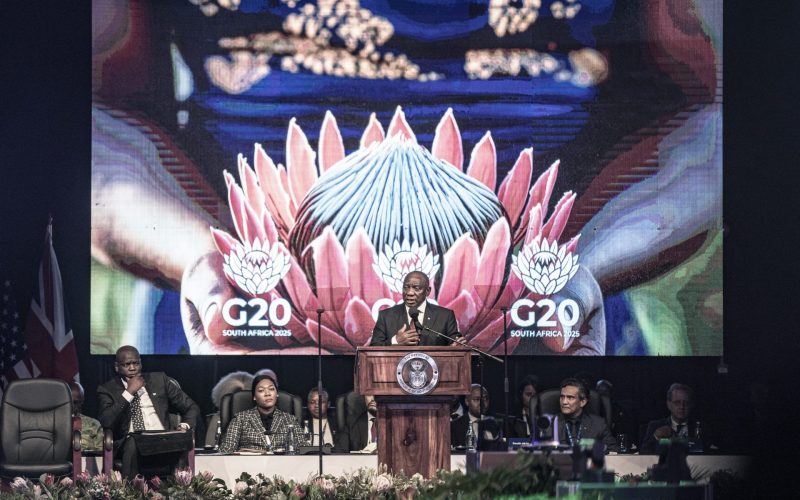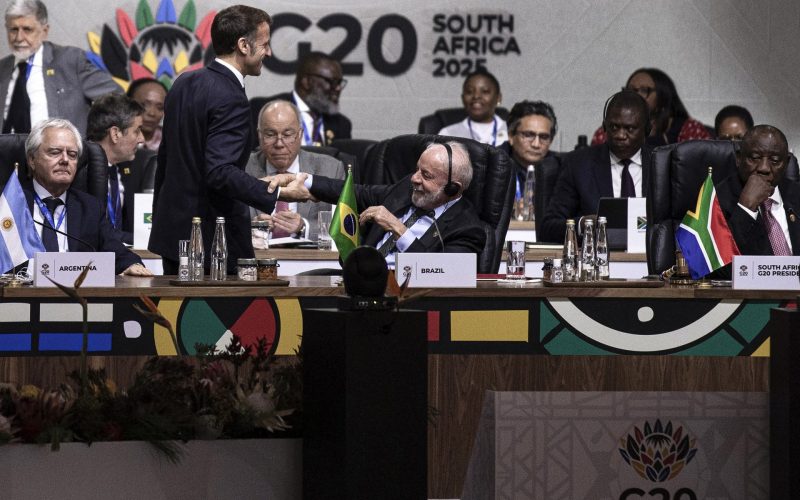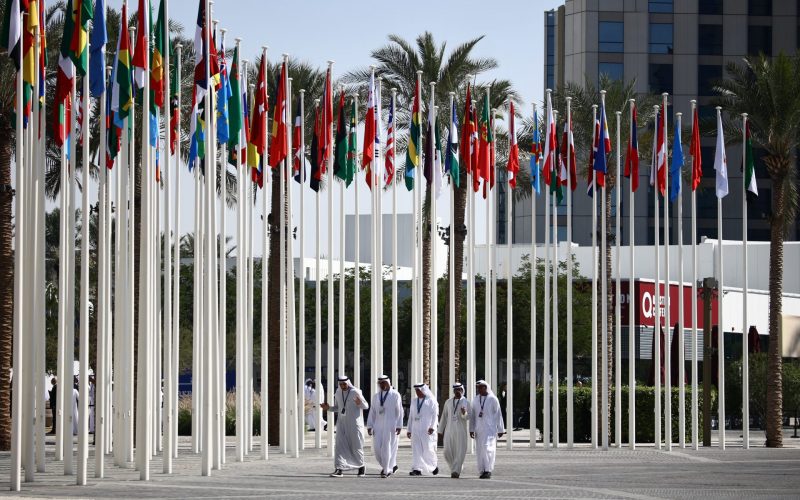Recommendations
AfCFTA member states should pay attention to these policy priorities:
- Regulatory reform (aligning national regulatory frameworks with the prerogatives of the AfCFTA’s Digital Trade Protocol):
- Adopting common standards for data protection, cybersecurity and electronic transactions to ensure consistency across borders; and
- Simplifying regulations that relate to e-commerce and creating the conditions whereby fully formed digital ID for persons and entities is possible.
- Digital public infrastructure development:
- Amending domestic regulations to allow Starlink, which is an important mitigator of
terrestrial connectivity deficits, to operate; and - Modernising financial and banking regulations to accommodate fintech, which is an important driver of financial inclusivity.
- Amending domestic regulations to allow Starlink, which is an important mitigator of
- Education and skills:
- Prioritising the provision of devices and incorporating ICT learning in curricula from the primary-school level, as well as investing in the provision of higher education and training in digital skills.
Executive summary
The Digital Trade Protocol of the African Continental Free Trade Area (AfCFTA) agreement aims to harmonise regulations and foster digital trade across Africa. Africa’s low internet penetration of 37% indicates considerable digital exclusion – something that is especially noticeable in the rural–urban digital divide. This participation gap is one of the most glaring constraints to digitally driven development on the continent. To address this, AfCFTA member states should target regulatory reform, guided by the core principles of the protocol, which addresses aspects such as data protection, crossborder data flows, electronic payments and cybersecurity. Member states can facilitate implementation by aligning regulations with the protocol, investing in broadband infrastructure and facilitating satellite access. In addition, they can prioritise digital education, awareness-raising and literacy. Addressing these areas will help bridge the digital divide, promote e-commerce and drive economic growth through enhanced intra-African trade.
Introduction
The Digital Trade Protocol is an important component of the AfCFTA agreement, in light of the increasing importance of digital trade and the reality of the global digital economy. This protocol has as its goal a harmonised set of rules and principles to be adopted by member states but ultimately it is a strategic legal framework for the interoperability of the digital economies of the region, aimed at greater intra-African digital trade. Currently, the quantum of intra-African digital trade, in common with merchandise and services trade, is less than trade between Africa and the rest of the world (ROW). Reversing this pattern and stimulating intra-African trade is one of the primary goals of the AfCFTA agreement. However, Africa faces an important challenge: that of digital exclusion. This refers to the exclusion of segments of the population from participating in the digital economy, which encompasses more than just digital trade. In spite of the rapid growth of the internet and increased smartphone penetration, there remains a significant digital divide in Africa, particularly between urban and rural areas.1According to the most recent International Telecommunication Union (ITU) data, urban internet penetration in Africa is 57% (global aggregate 81%) and rural internet penetration 23% (global aggregate 50%). See ITU, “Facts and Figures 2023: Internet Use in Urban and Rural Areas”, accessed November 26, 2024.
The drivers of this unfortunate predicament include inadequate digital public infrastructure, lack of digital literacy, high connectivity costs, budgetary constraints, size of the land mass, challenging terrain, outdated or inadequate regulatory frameworks, lack of capital and skill shortages. While not directly aimed at bridging the digital divide in Africa, the protocol could play a role in alleviating it.2It should be noted that article 27 of the protocol does address digital inclusivity and encourages member states to approach the problem with particular attention to the business interests of women, youth and MSMEs. Provided the political will exists and if duly implemented by a critical mass of member states, the protocol could lead to an increase in the continent’s digital trade activities (e-commerce and digitally delivered services [DDSs]), driven by gravity factors, reciprocal liberalisation and continental commonalities.3For example, streaming video is one of the most important digitally delivered services globally, but the main service providers do not carry much content created in Africa and targeted at African audiences. An African streaming video service such as Showmax could leverage the protocol and the improved level of access to African markets to grow its business. It is also anticipated to attract foreign investment by providing a more predictable and secure business environment.4UN Economic Commission for Africa, The Role of the AfCFTA in Boosting Digital Trade in Africa (UNECA, 2023).
This policy briefing outlines the steps national governments can take to facilitate the implementation of the protocol in the areas of digital public infrastructure, human capital and regulatory reform. It also considers several related issues, such as the funding of policy initiatives, the existence of e-commerce and digital trade policies in regional economic communities (RECs) and the importance of the private sector in driving intra-African digital trade.
What member states can do to facilitate implementation of the protocol: Policy recommendations
Member states can begin taking steps to facilitate the implementation of the protocol. These steps can broadly be organised into those relating to:
- Regulatory reform and the strengthening of institutions;
- Digital public infrastructure development; and
- Education and skills (human capital development).
Scheduling: Foundational vs catalytic
In terms of scheduling these steps, all three focus areas could be regarded as foundational since their pre-existence could facilitate member states’ alignment with the protocol’s priorities. Within these categories, regulatory reform can be achieved more quickly than the other two. Digital public infrastructure development, likewise, can generally be achieved more quickly than skills development, which requires medium-term planning and programme streaming. However, policy measures within these three priority areas can also be catalytic, ie, accelerating or facilitating progress towards socio-economic policy goals. While foundational measures establish the necessary conditions for economic growth and stability, catalytic measures are designed to leverage these conditions to achieve specific, accelerated outcomes. Both are critical, but their effectiveness is often interdependent. In the case of a country aiming to develop its digital economy and overcome digital exclusion, foundational measures would include investing in broadband infrastructure, improving digital literacy and establishing data protection laws. Catalytic measures could involve offering incentives for tech startups (industrial policy), creating innovation hubs (infrastructure development) and implementing e-governance (regulatory) initiatives to boost the adoption of digital services. Catalytic regulatory reforms build on the foundational framework to accelerate digital trade. These steps include strengthening intellectual property rights laws and fostering regional cooperation for their enforcement, as well as ensuring competition law maintains a business environment that encourages new entrants. By protecting digital content and innovation, member states can encourage investment in the digital sector.
Additionally, developing compliance mechanisms for data protection and privacy laws will enhance the trustworthiness of digital transactions, stimulating greater participation by businesses and consumers.
Catalytic steps in infrastructure development involve supporting local e-commerce platforms and ensuring their interoperability, as well as facilitating access to affordable cloud services.5Regarding cloud services, it is noted that Africa is highly dependent on ROW providers of cloud business services.
The introduction of duties on ROW-imported DDS will be difficult to implement, costly and prejudicial to businesses (both traditional and ICT businesses).
Catalytic steps in education and skills development could include developing specialised training programmes focused on e-commerce and digital trade and promoting entrepreneurship programmes that support digital startups.
Funding prerogatives
In all three policy areas, attention needs to be given to funding requirements – these are, in a sense, the most ‘foundational’ requirements of all. Regulatory design is a function of central government and is usually covered in national budgets. Likewise, the bulk of educational funding is part of national and provincial government budgets with a portion self-funded by customers of private education. However, training in technology generally requires equipment in the form of tablets, laptops and PCs, which may need additional funding to that allocated in domestic budgets. Teachers and facilitators in these subject areas are sometimes also priced at a premium, raising the issue of the need for external funding.
Multiple global programmes are already involved in funding technology training and skills acquisition in Africa, for example:
- The World Bank and the African Development Bank are involved in large-scale educational projects, including educational infrastructure and teacher training.
- UNESCO runs educational programmes in the STEM.6Science, technology, engineering and math. and information and communications technology (ICT) fields.
- Private foundations such as the Bill & Melinda Gates Foundation and the Mastercard.
- Foundation fund education and technology training in Africa.
In addition, the AU itself and the African Development Fund promote and invest in technology and ICT education.
Were ICT infrastructure funding only to come from state players such as national telecoms operators it would not be sufficient to meet the needs of the nascent digital economy. Public–private partnerships are one way in which African countries can approach the funding issue. One example of this is the IBM Research Lab in Kenya.7IBM, “IBM Research – Africa”. This partnership aims to develop commercially viable technology solutions that address key challenges in Africa, including health, education, water and agriculture, leveraging IBM’s expertise in technology and research. Bilateral aid from developed countries and multilateral aid from international organisations (eg, the World Bank, which has traditionally assisted with infrastructure funding in developing countries) are also used. Furthermore, private firms such as MTN and Orange invest in infrastructure as a matter of course, and tech giants such as Google and Meta are involved in various initiatives to improve internet connectivity to Africa.
Regulatory reform
Aligning national regulations with the AfCFTA protocol is critical. Such regulatory harmonisation will mean improved legal certainty, reduced compliance costs and the facilitation of cross-border data flows. Among the expected benefits would be strengthened regional supply chains and enhanced cross-border cooperation. The harmonising of regulations includes adopting common standards for data protection, cybersecurity and electronic transactions to ensure consistency across borders. Establishing robust data protection frameworks can build trust in digital transactions. Governments should implement and enforce laws that protect consumers’ privacy and secure data. In addition, member states should simplify regulations that relate to e-commerce. This means making it easier to register digital businesses, comply with tax regulations and navigate trade procedures. E-commerce businesses and digital service providers are just a subset of business in general and attention needs to be given to the overall business environment, especially for medium, small and micro enterprises (MSMEs).8See, for example, John Stuart, “Why the Policy Environment Matters for South Africa”, Business Day, September 30, 2021.
It is important not to neglect the catalytic role of the regulatory nexus in creating the conditions whereby fully formed digital ID for persons and entities is possible. Digital ID can be defined as9Charlotte Bowyer, “What Is Digital Identity? Your Guide to Digital Identity”, Onfido, blog post, January 12, 2024. a collection of information about a person that exists online. When this information is grouped together it can provide a digital representation of an individual to help them access services and goods once a business has verified the identity of the customer. In other words, the existence of digital ID is a prerequisite for full entry into digital trade for entities and individuals. The protocol seems to recognise this, as it dedicates an article (article 14) to digital ID. However, the protocol annex refers to a state-maintained digital ID rather than the concept defined above, which refers to the collective of identifying data across multiple commercial and social media online platforms. In this context, regulatory reform refers to the creation of a regulatory environment that supports the prerequisites for digital ID: online security, data protection, consumer protection and digital authentication. This is the responsibility of member states.
Digital public infrastructure development
As noted above, deficiencies in internet communications infrastructure in Africa are an important driver of the digital divide. The development of comprehensive broadband infrastructure, especially fixed-line broadband, is probably not even an option for most African countries at present and may not be for another decade or more. However, the availability of satellite internet services such as Starlink is an important mitigating factor. Although satellite internet services are not as affordable as fixed-line broadband, they are generally cheaper than mobile broadband and entail no terrestrial infrastructure commitments by member states. Accessing the Starlink service, however, relates to the previous point about regulatory reform. Certain African countries – such as the Democratic Republic of Congo, South Africa, Ghana and Botswana – have not legalised the service and their regulators have in the past asked Starlink to disconnect users in their territories.10Osamu Ekhator, “Starlink to Disconnect Subscribers in Ghana, South Africa, Botswana”, Techpoint Africa, April 16, 2024. An important policy recommendation would be for member states to consider amending domestic regulations to enable the service.
Other recommendations relating to ICT infrastructural development would be to modernise financial and banking regulations to accommodate fintech and digital payments systems.
Member states also need to work with Afreximbank’s PAPSS or Pan-African Payments and Settlement System which, at the time of writing (November 2024), had 13 subscribing African countries.11Afreximbank, “PAPSS Expands into North Africa as Banque Centrale de Tunisie Becomes Thirteenth Member”, December 2, 2024. Finally, international donor-funded digital public infrastructure initiatives such as the 50-in-5 project,1250-in-5, “Implementing Digital Public Infrastructure, Safely and Inclusively”, accessed December 2, 2024, which already has eight African countries on board (out of a current total of 22), play an important role. Such projects leverage international experience and technology transfer to make the journey to digital inclusivity easier for developing countries.
Education and skills
In order to promote digital literacy and develop digital skills, member states should prioritise the provision of devices and incorporate ICT learning in curricula from the primary school level. They should also invest in the provision of higher education and training in digital skills. Additional catalytic measures would include training teachers themselves in digital skills and providing specialised training programmes focused on e-commerce and digital trade for individual internet users and MSMEs. Today, it is not possible to be taken seriously (and in some cases even to trade) as a business without a web presence. While not all businesses are ‘tech’ businesses, all formal sector (and some informal) businesses need to have websites – and some need webshops to trade. Training in how to construct and maintain a website would be catalytic in overcoming the digital trade exclusion of MSMEs and individuals. In terms of the AfCFTA and its Digital Trade Protocol, member states could also consider awareness-raising, possibly through business chambers and forums. Of the two tech entrepreneurs contacted for interviews for this briefing, neither knew anything about the AfCFTA or the protocol.
The role of the private sector
The private sector operates within the business environment created by regulatory bodies and, ultimately, government. Businesses are also driven by the profit motive and their obligations to shareholders and providers of capital. Their role is primarily to give feedback to governments and regulatory authorities on their needs regarding the optimal business policy environment. To do this, they need effective business chambers and industry associations.
Parallel e-commerce and digital trade strategies at REC level
- Parallel e-commerce and digital trade strategies in African RECs and at the sub-regional level are not necessarily a problem for a continental digital trade approach. ECOWAS, the EAC, SADC and the Intergovernmental Authority on Development are examples of African RECs that have some form of formalised digital trade strategy in place. These established structures can provide a foundation for the AfCFTA protocol, allowing smoother integration and alignment. However, existing strategies and protocols are also capable of frustrating alignment to the continental approach.13The “continental approach” referred to here goes beyond the protocol, which is to be appreciated in the context of the existing continental digital strategy. The AU Digital Transformation Strategy, which predates the protocol by several years, and strategies such as the AU Data Policy Framework create the context and set the scene for the protocol. The latter gives legal expression, by way of the multi-party agreement around the AfCFTA in general, to the approach to continental digital development that is already in place. See AU, “The Digital Transformation Strategy for Africa (2020–2030)”, accessed November 26, 2024. Firstly, different RECs may have divergent regulations and standards for e-commerce, leading to potential conflicts and overlaps when trying to implement a unified continental protocol (hence the unifying framework of the AfCFTA protocol). Secondly, there may be jurisdictional complications: the existence of multiple regulatory bodies at the REC level can lead to jurisdictional ambiguities and conflicts, complicating the governance and enforcement of the AfCFTA protocol.
- One way to approach potential friction between regional strategies and the continental approach would be to promote incremental harmonisation. Rather than a ‘big bang’ approach, this would mean gradually harmonising REC-level strategies with the AfCFTA protocol through phased implementation. This is, in essence, the approach being taken with the AfCFTA merchandise free trade agreement – with a phase-in of tariff reductions and the designation of sensitive and excluded lines. In the short term, regulatory alignment can be made in areas such as:
- Cross-border data flows (article 21); and
- Digital trust/authentication, paperless trading, electronic contracts and electronic invoicing (articles 9, 10,11, 13 and 14).
The following are examples of alignments to make in the medium term, based on their greater level of complexity, the number of impacted stakeholders and the required coordination:14AfCFTA Secretariat, Protocol to the Agreement Establishing the African Continental Free Trade Area on Digital Trade (AfCFTA Secretariat, 2024).
- Logistics and last-mile delivery (article 12);
- Digital identities (article 15);
- Digital payments (article 16);
- Digital infrastructure (article 19);
- Protection of personal data (article 22); and
- MSMEs (article 32).
Conclusion and a note on levelling duties on digitally delivered services
Currently, the quantum of intra-African digital trade, as with merchandise and services trade, is less than trade between Africa and the ROW. Reversing this pattern and stimulating intra-African trade is one of the primary goals of the AfCFTA agreement and, by extension, its Digital Trade Protocol. This policy briefing described the main purposes of the protocol in the context of the extent of digital exclusion in Africa, particularly in rural areas. It also presented several recommendations aimed at governments (AfCFTA member states) and the private sector. The goal is to both facilitate digital integration (governments) and allow stakeholders to benefit from the liberalisation and harmonisation hopefully proceeding from the agreement’s implementation (private sector). At the heart of every free trade agreement is trade liberalisation, or the phasing out of barriers to free trade such as customs duties, quotas and non-tariff barriers; and the requisite formulation of rules of origin. While the AfCFTA merchandise agreement (the main agreement) seeks to do exactly this, when it comes to the trade in DDS, no duties are in place in any global trade, in line with the WTO e-commerce moratorium.15World Trade Organization, “Work Continues on Issues Needing Clarification”, accessed November 26, 2024. By contrast, the protocol suggests in articles 6 and 7 that member states will depart from this consensus by developing rules of origin for DDS, with the aim of developing the intra-African market for DDS. Confoundingly, the associated Digital Trade Protocol annex does not seem to fully define ‘digital products’, given that ‘services’ are not properly included in the definition. While a detailed treatment of this issue is outside the scope of this policy briefing, it bears mentioning here that the attempted levelling of duties on DDS arising in the ROW is a departure from global consensus and likely to entail greater costs than benefits, especially to African businesses.








